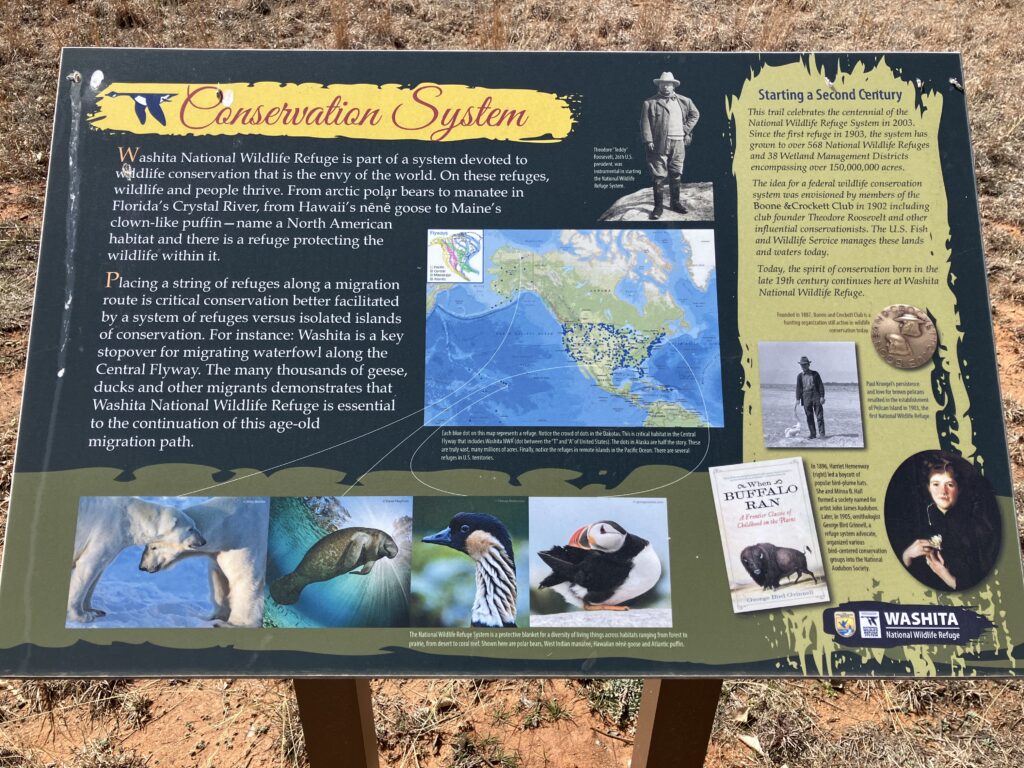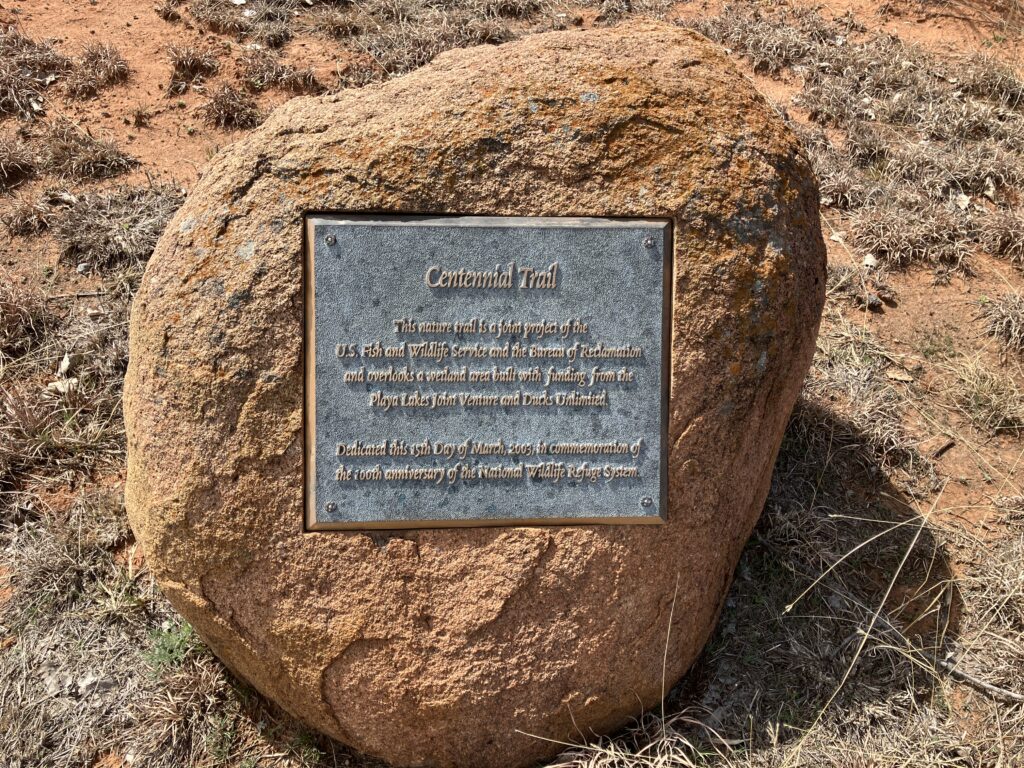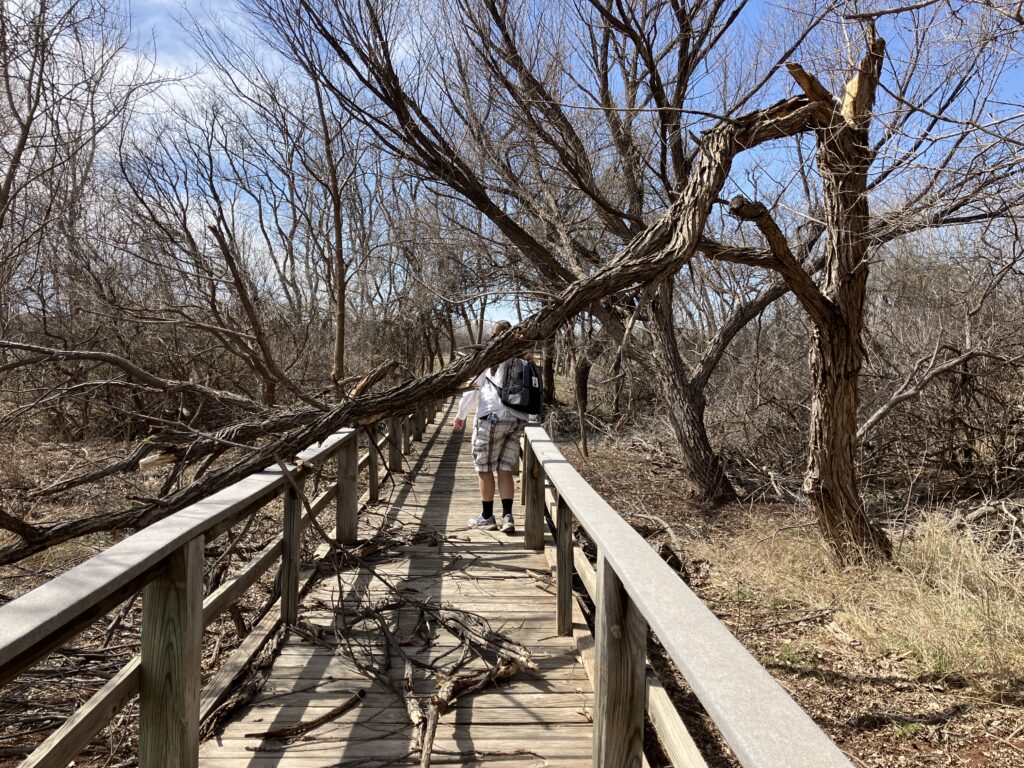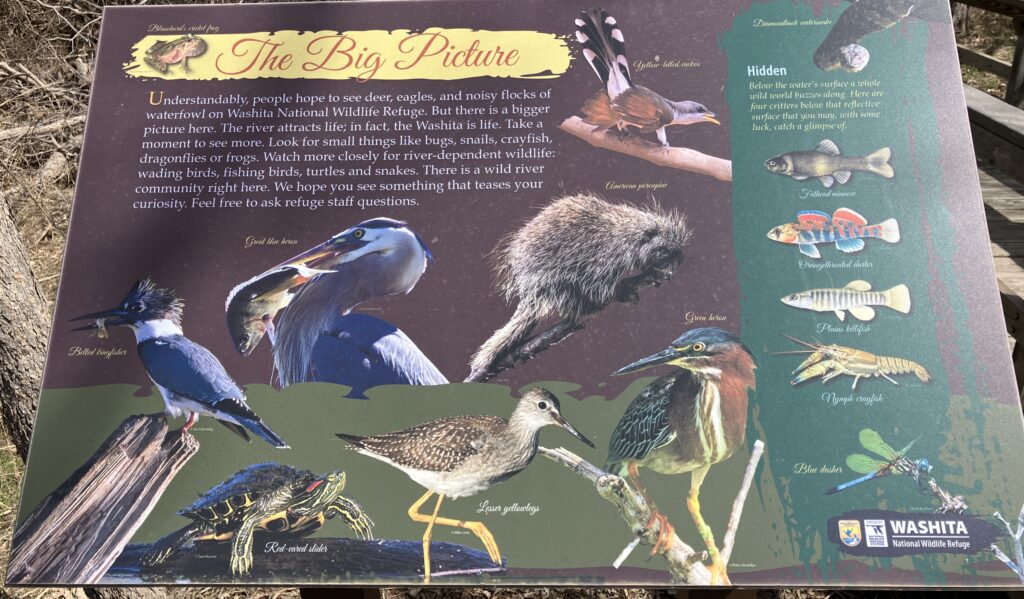Washita National Wildlife Refuge, OK
The state park and campgrounds are on the south eastern edge of Foss lake, and Washita National Wildlife Refuge is on the north western edge of Foss Lake. We had to go to Washita NWR because they have a cancel stamp for the national parks book. Sadly, the park office was closed. We did drive around and look at a few places that will be covered in other posts.
Washita NWR is part of a series of wildlife refuges throughout the United States that supports migrating birds and other wildlife habitats. For nearly any habitat, there is a refuge somewhere in the United States protecting it.
The Centennial trail was a paved loop built to celebrate the 100th anniversary of the park. The loop is about one mile long with a viewing deck in the middle. The viewing deck overlooks a flood area for the river. The interesting part is that they built up a series of walking rings with overflow pipes.
Way off in the distance, we saw some water birds in the far overflow pond; it was the only pond with a little bit of water. We tried to sneak up on the birds, but Elmer Fudd would be disappointed. We utterly failed at sneaking. I thought we did not get any good pictures, but some of them turned out OK. (250mm lens for the win!) We originally thought they might be mallards. Kate thought they were too small. John thought their coloring looked off. Turns out that we were both right.
It turns out that these are not mutant mallards; they are northern shoveler ducks. Northern shoveler ducks are related to mallards, but they are more closely related to teals. They are about 75% the size of a mallard. They have black spoon bills instead of orange duck bills. They also have a white chest instead of a white neck ring.
We also heard a rather piercing and annoying bird that turned out to be a Killdeer. Killdeer nest on the land, so their camouflage is excellent. They also pretend to be lame to lead predators away from their nest.












One response to “Washita NWR: Centennial Trail”
We have killdeer here. There song sounds like they are saying kill deer.